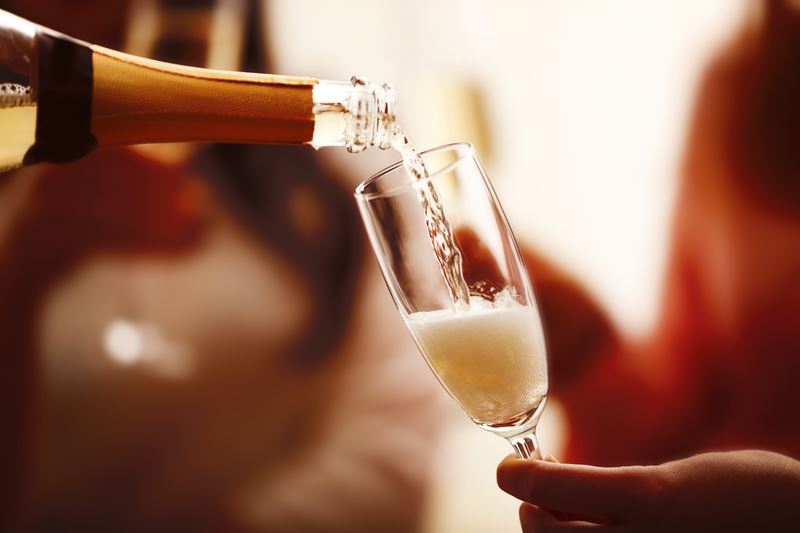The rise of non-alcoholic sekt in Germany
Economic pressures and health trends drive a shift in german drinking habits
2024-03-04

In the heart of Germany, a country renowned for its rich cultural tapestry and technological prowess, lies an unassuming champion of a bubbly delight: Sekt, the German sparkling wine that has tickled and captivated the palates of many, not just within its borders but across the globe. Despite a global trend of tightening belts and a cautious approach to consumer spending, Germans have shown an unwavering commitment to this effervescent beverage, albeit with a twist that mirrors the changing times.
Recent reports from the Verband Deutscher Sektkellereien (Association of German Sparkling Wine Cellars) illuminate a fascinating shift in consumption patterns. While the love for Sekt remains robust, there's a growing inclination towards non-alcoholic versions, signaling a broader trend towards mindful drinking. This surge in demand for alcohol-free sparkling wines is part of a larger narrative that intertwines with the economic currents and evolving consumer preferences sweeping through Germany.
The economic landscape has indeed seen better days, with purchasing power taking a hit and a general dampening of consumer spirits. Yet, in this climate of fiscal prudence, the Germans' penchant for Sekt has proven to be remarkably resilient. This resilience, however, does not extend unconditionally across the board. The wine market, for instance, has felt the pinch, particularly domestic offerings, which have seen a more pronounced price hike compared to their international counterparts.
Data from the Deutsches Weininstitut (German Wine Institute) in Bodenheim, drawing on a wine market analysis by NielsenIQ, sheds light on this trend. In 2023, the average price for wine climbed by five percent to 4.08 euros per liter, with German wines experiencing a steeper rise of 31 cents, reaching 4.51 euros per liter. In contrast, foreign wines saw a modest increase of 11 cents, amounting to 3.76 euros per liter. This discrepancy has nudged consumers towards more budget-friendly international options, as evidenced by a nine percent dip in the sales of German wines, juxtaposed with a mere one percent decline for foreign wines.
The ramifications of these shifts are palpable. The market share of German wines has receded, paving the way for international varieties to claim a larger slice of the pie. Italian wines, in particular, have flourished, securing a 17 percent market share, followed by Spanish and French wines, which have held steady.
On the sparkling front, German Sekthersteller (sparkling wine makers) reported a slight downturn in sales of traditional Sekt, yet the thirst for alcohol-free alternatives has surged, marking a significant pivot in consumer preference. In 2023, Germans purchased approximately 18 million bottles of non-alcoholic sparkling wines, a notable increase from the previous year, underscoring a burgeoning interest in healthier, more inclusive beverage options.
This evolving landscape presents both challenges and opportunities. The German wine industry, while navigating the currents of economic strain and shifting consumer preferences, remains a testament to the enduring appeal of wine and sparkling wine. The rise in demand for alcohol-free Sekt is not merely a trend but a reflection of a broader societal move towards moderation and mindfulness in consumption.
As the industry looks towards the future, there is cautious optimism. The hope is that as economic conditions improve, so too will the fortunes of the German wine and sparkling wine market. The story of Sekt in Germany is one of resilience, adaptation, and an undying love for the finer bubbles in life. It's a narrative that continues to unfold, promising new chapters of innovation, tradition, and celebration, all poured into a glass of Germany's finest.
Founded in 2007, Vinetur® is a registered trademark of VGSC S.L. with a long history in the wine industry.
VGSC, S.L. with VAT number B70255591 is a spanish company legally registered in the Commercial Register of the city of Santiago de Compostela, with registration number: Bulletin 181, Reference 356049 in Volume 13, Page 107, Section 6, Sheet 45028, Entry 2.
Email: [email protected]
Headquarters and offices located in Vilagarcia de Arousa, Spain.